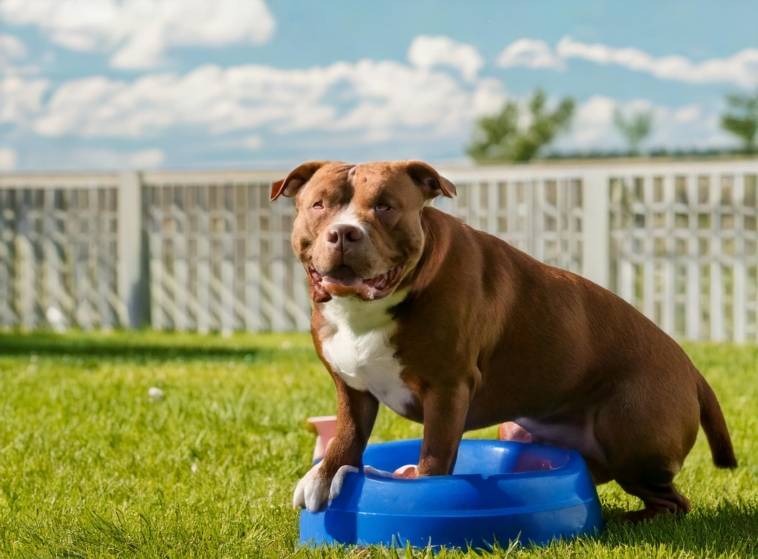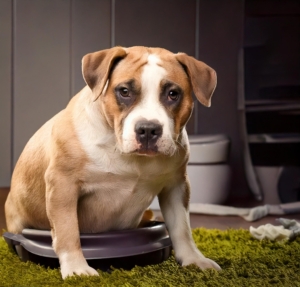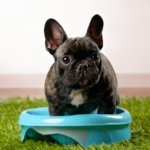Here’s an overview;
Introduction to Pitbull’s Temperament and Behavior
How To Potty Train Your Pitbull: What Methods to Use
Positive reinforcement strategies
Pitbull Monitoring and Supervision Strategies
Managing Accidents with a Lot of Composure
Benefits of the Crate Training Method and Tips on Crate Training Method
Using Commands and Cues Effectively for Pitbull
Keeping Calm and Don’t Give Up
Introduction to Pitbull’s Temperament and Behavior
Pitbulls are exceedingly loyal and affectionate dogs with endless stamina. Sometimes, having an understanding of their temperament can come in handy during the process of potty-training. Other notable behavioral characteristics are:
- Intelligence: Because they are highly intelligent, they are also quick learners and hence, require an adequate degree of mental activity.
- Protectiveness: A very strong quality in them that can affect their social behavior.
- Sociability: Most of the time, they can crave human companionship and may develop separation anxiety if left for an extended period of time.
Sensing these behavioral traits will also assist in formulating an appropriate training approach that complements a dog’s behavioral traits and its needs.
How To Potty Train Your Pitbull: What Methods to Use
The method you select for potty training is very vital for the entire process. You can use any of the following approaches as alternatives:
- Crate Training: Makes use of the Dog’s instinct and creates a controlled area that encourages him to keep his area clean.
- Scheduled Walks: Provides an arrangement that allows the dog to regularly take bathroom breaks.
- Potty Pads: Can be used especially when indoor training is needed and it provides an area where he can urinate.
Assess the dog’s temperament and lifestyle so that you can determine what technique will be more effective. It is also important to maintain the necessary level of consistency and patience when reinforcing the dog’s desired behaviors.
Developing a Regular Schedule
Establishing a regular schedule is essential when housebreaking any dog such as the Pitbull. Start making it a habit to take the dog out first thing in the morning, after meals, and before sleep.
- Feed At the Same Hour: They would have the same feeding times every day so it can be predictable when they have to go relieve themselves.
- Apply Keywords: Employ particular terms such as “potty” encouraging them to remove waste.
- Reward At The Right Moment: Distribute praise or treats right after the dog does the necessary removal outside.
Positive reinforcement strategies
Positive reinforcement is an essential approach in encouraging a Pitbull during the potty training process.
- Praise: Psychologically reinforces the behavior that is right at the moment.
- Treats: These are small snacks that delight and create excitement making the dog happy.
- Consistency: Provide a reward every time they perform the correct behavior.
Proper application of these techniques will deliver positive results regarding the Pitbull during this stage of training, thus completing the desired task.
Setting Designated Elimination Area for Pitbull
Establishing a designated potty place will help in quickening your Pitbull potty training. Here are key steps to designate a specific potty spot:
- Locate the Spot that is Easily Accessible: This would be the best place to take the dog out for potty.
- Be Consistent in This Task: Anytime your Pitbull needs to relieve itself, go to the same area.
- Reward Appropriately: Make sure the dog gets a treat after relieving itself in the correct area.
- Limit Outside Interference: In some cases, other dogs may be present, try to avoid these spots.
- Indicate Using Simple Instructions: Make use of simple words like “go potty” so the pup can make an association.
Following these suggests makes it possible to achieve smarter working.
Pitbull Monitoring and Supervision Strategies
Monitoring properly is of utmost importance in achieving successful potty training.
- First Constant Supervision: Continuous supervision of the owner over their Pitbull during training, specifically in the early stages when the parties are not familiar with each other. Close surveillance helps avoid accidents and enhances training.
- Leashes: When performed indoors, the use of leashes helps to restrict the dog’s movement, and the need to go outdoors can be easily recognized.
Managing Accidents with a Lot of Composure
- N/A: Avoid any wrath where emotions and voices are raised as this can render the pets scared and in confusion.
- Yes: Enzymatic cleaners are ideal to use as they eliminate unpleasant smells that would cause one to keep having ‘accidents.’
- No: If the puppy is caught doing something that it is not supposed to, it then has to be taken calmly outside immediately.
- Yes Please: Implore the pet owners to always be persistent during the potty training sessions and only reward success.
- No: Such reinforced behaviors result from positive reinforcements when the pet potties in the right place.
Staying calm is imperative as a calm atmosphere is safe for your pitbull and leads to trust.
Benefits of the Crate Training Method and Tips on Crate Training Method
When used as part of the process of potty training for pitbulls during their training sessions, crate training works wonders.
Recommendations:
- Select the Correct Size: The crate must be wide enough for the pitbull to stand, rotate in it, and also lie down.
- Gradual Introduction: Allow the golden retriever the choice of getting into the crate in its own time.
- Rewarding: Provide treats as well as use praise to help the pitbull create positive associations with the crate.
- Routine Training: Remember the key aspect is routine.
- Limit Use: Under no circumstances utilize the crate as a form of discipline. It should remain an enjoyable place.
Using Commands and Cues Effectively for Pitbull
When it comes to potty training a Pitbull, clear and consistent commands are very important.
- Choose a Command: Decide on a word as a command. ‘Potty’ and ‘outside’ are good examples of such words. Make sure to use the set word every time the pitbull needs to relieve itself.
- Voice Tone: Calm but firm voice will always gain respect. Never shout as this leads to unnecessary confusion.
- Hand Signals: Encode voice cues with hand actions for better understanding.
Repeat time and time again. Have patience.
Keeping Calm and Don’t Give Up
Patience and persistence are some of the much-needed skills if one is to potty train a Pitbull properly. There may be losses here and there, but one should remain collected.
- Set a Schedule: Potty breaks, feeding and exercise should be done at the same time on a given day.
- Always Reward: Treat and praise the dog each time he goes out to relieve himself.
- Never Scold: No scolding should be done for accidents, as this only raises stress and confusion.
- Bathroom Schedule: Short breaks should be taken, especially after meals, naps and playtime.





